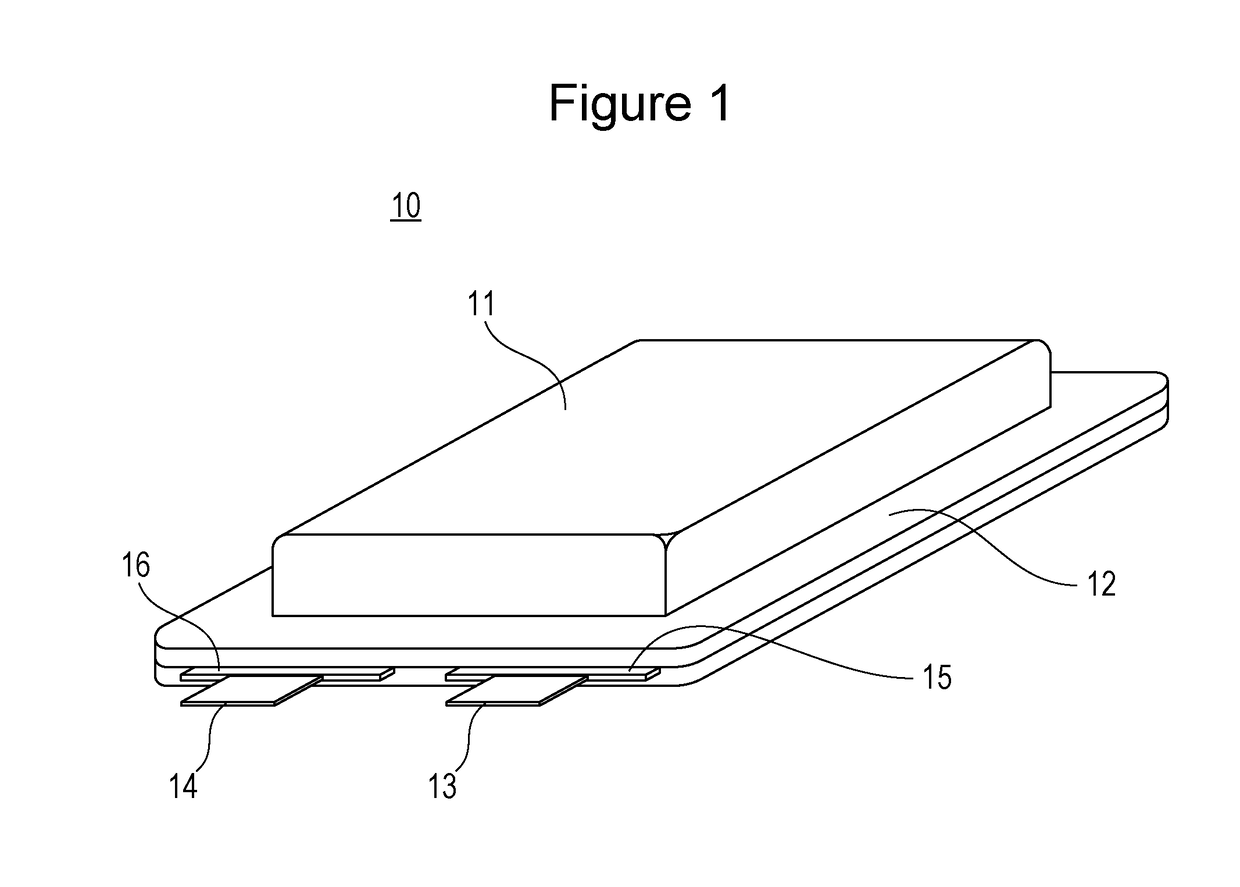Negative electrode plate for nonaqueous electrolyte secondary battery and nonaqueous electrolyte secondary battery
a technology of negative electrode core and secondary battery, which is applied in the manufacture of final products, cell components, electrochemical generators, etc., can solve the problems of preventing the acquisition of high-capacity batteries, and achieve the effect of suppressing the breakage of the negative electrode core, reducing the volume change, and increasing the theoretical capacity
- Summary
- Abstract
- Description
- Claims
- Application Information
AI Technical Summary
Benefits of technology
Problems solved by technology
Method used
Image
Examples
experiment examples 1 to 4
[0046]In nonaqueous electrolyte secondary batteries of Experiment Examples 1 to 4, the following plates were used: negative electrode plates prepared by varying the content of the silicon oxide represented by SiO in the negative electrode active material to 0-3% by mass (Experiment Example 1), 0.5% by mass (Experiment Example 2), 20.0% by mass (Experiment Example 3), and 22.0% by mass (Experiment Example 4). On this occasion, in each example, an ammonium salt of CMC was used and copper foil having a thickness of 6 μm and a surface roughness Rz of 1.4 μm was used as a negative electrode core.
experiment examples 5 and 6
[0047]In a nonaqueous electrolyte secondary battery of Experiment Example 5, the following plate was used: a negative electrode plate that was prepared in such a manner that copper foil having a thickness of 6 μm and a surface roughness Rz of 1.4 μm was used as a negative electrode core, the content of the silicon oxide represented by SiO in the negative electrode active material was 1.0% by mass, and a sodium salt of CMC was used. In a nonaqueous electrolyte secondary battery of Experiment Example 6, the following plate was used: a negative electrode plate that was prepared in such a manner that copper foil having a thickness of 8 μm and a surface roughness Rz of 1.4 μm was used as a negative electrode core, the content of the silicon oxide represented by SiO in the negative electrode active material was 1.0% by mass, and an ammonium salt of CMC was used.
experiment examples 7 to 10
[0048]Nonaqueous electrolyte secondary batteries of Experiment Examples 7 to 10 were prepared using copper foils with a thickness of 6 μm (Experiment Examples 7 to 10) as negative electrode cores such that the content of the silicon oxide represented by SiO in the negative electrode active material was 1.0% by mass. The copper foils had a surface roughness Rz of 1.7 μm (Experiment Example 7), 1.5 μm (Experiment Example 8), 0.8 μm (Experiment Example 9), or 0.7 μm (Experiment Example 10). On this occasion, all in each example, an ammonium salt of CMC was used.
[0049][Measurement of Adhesion of Negative Electrode Plate]
[0050]For the peel strength of each negative electrode plate, after the negative electrode mix slurry was applied to both surfaces of a negative electrode core made of copper foil by a doctor blade method and moisture was removed by drying, compression to a predetermined thickness was performed using a compaction roller. Thereafter, an adhesive tape was attached to a sur...
PUM
| Property | Measurement | Unit |
|---|---|---|
| surface roughness Rz | aaaaa | aaaaa |
| surface roughness Rz | aaaaa | aaaaa |
| thickness | aaaaa | aaaaa |
Abstract
Description
Claims
Application Information
 Login to View More
Login to View More - R&D
- Intellectual Property
- Life Sciences
- Materials
- Tech Scout
- Unparalleled Data Quality
- Higher Quality Content
- 60% Fewer Hallucinations
Browse by: Latest US Patents, China's latest patents, Technical Efficacy Thesaurus, Application Domain, Technology Topic, Popular Technical Reports.
© 2025 PatSnap. All rights reserved.Legal|Privacy policy|Modern Slavery Act Transparency Statement|Sitemap|About US| Contact US: help@patsnap.com


